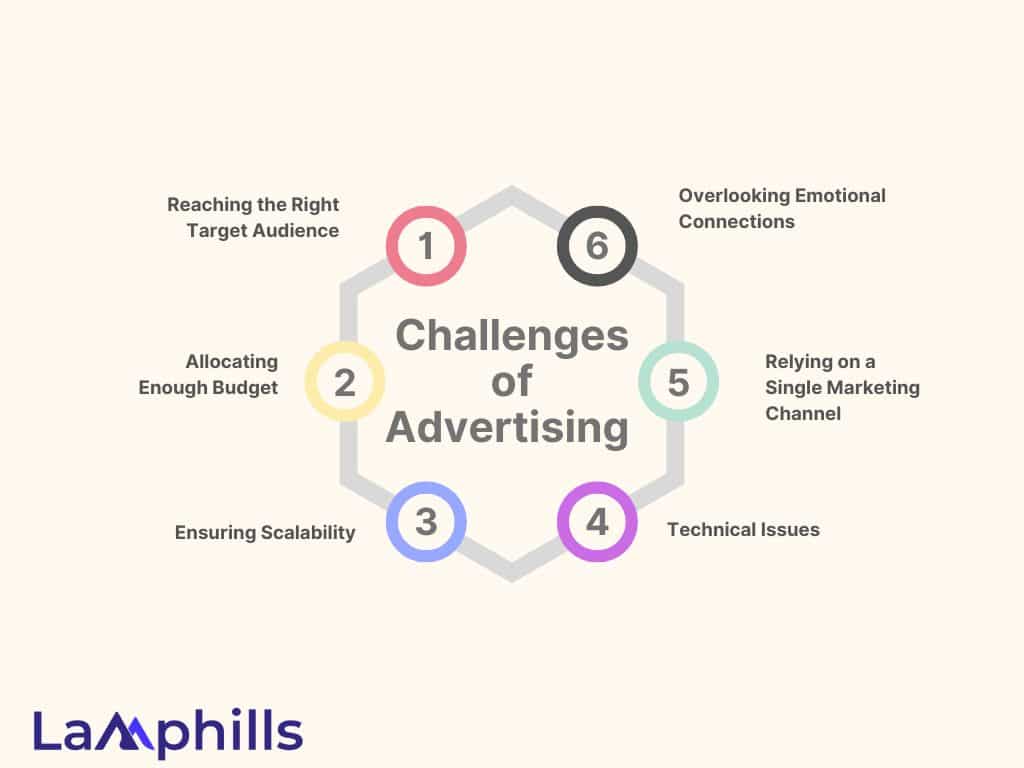In Nigeria’s competitive business landscape, the distinction between branding vs advertising is like the difference between planting a seed and watering it. Branding is the deep-rooted identity of your business—the values, vision, and personality that set you apart. Advertising, on the other hand, is the megaphone that broadcasts that identity to the world, driving immediate action. Understanding how these two work together is key to creating a lasting impact on the market. In this article, I will explain the meaning of branding vs. advertising, their importance, and the differences between them.
What Is Branding?
Branding creates a strong, positive perception of a company, product, or service in customers’s minds through a consistent theme, logo, design, and mission statement. It’s a promise to customers, differentiating one company from another and communicating unique value. Branding is an integral part of successful businesses, building customer loyalty and trust and driving growth. It’s a meticulous process, leading to a perception that stands out in the marketplace and connects with customers emotionally.
Branding defines and expresses a company’s unique identity, encompassing its mission, values, and narrative. It consistently delivers on promises, creating an enduring image in consumers’s minds.
Here is a FREE Brand Identity Development Checklist to help you understand in detail:
Brand Identity Development Checklist.PDF
Branding comes to life through the logo, design, voice, and tone used in communications. It carves out a niche for a business, making it instantly recognizable. Branding involves developing identifiable features, such as name, logo, visual identity, mission, values, and tone of voice. It increases recognizability, gives a brand a competitive edge, and helps define how customers recognize a brand.
What Is Advertising?
Advertising brings products and services to the public’s attention through various media, including online platforms like LinkedIn, Facebook, and YouTube, as well as traditional media like print ads, broadcast TV, and radio. Its main purposes are:
- Generating revenue for companies
- Increasing brand awareness will stick in consumers’s minds.
- Persuading people to support the missions of nonprofits, agencies, and more
Advertising is a paid promotional activity aiming to sell a product or service to a target audience. Businesses pay for space or slots to publish or air their messages, called advertisements. The main goal is to persuade people to buy a product or perform an action, influencing one or more individuals through various mediums like print, radio, television, and digital media.
The Importance of Branding for Your Business
Branding has a lot of roles to play in your business. The few that are important include:
#1. Establishing Identity and Recognition
Branding helps create a unique identity for a company, making it recognizable to consumers and standing out in a crowded market. It establishes an identity different from similar products and services, assisting a brand in becoming successful and chosen above its competitors.
#2. Building Trust and Credibility
Effective branding helps build trust and credibility, fostering a sense of reliability and assurance. It communicates a sense of consistency and dependability among customers looking for trust in a product. Strong branding can contribute to the perceived value of a company, making it more attractive to potential investors.
#3. Driving Business Growth
Branding drives business growth by generating increased revenues and market share. It helps companies expand their estimated worth, enter new geographical markets, and gain new distribution opportunities. Successful branding increases business value, providing a company with stronger leverage in the industry.
#4. Connecting With the Target Audience
Branding helps connect with the target audience, establishing a company as an expert in the industry through consistency and presence. It clarifies the product’s mission and vision, telling customers the purpose of creating the product and what they can expect.
#5. Improving Customer Loyalty and Retention
Good branding creates emotional connections with customers, leading to increased customer loyalty and advocacy. It helps retain existing customers by providing consistent quality, making it easier and less costly to retain old and existing customers than to make new ones.
#6. Enhancing Business Value and Employee Pride
Branding increases the value of products and services, projecting a positive impression. It improves customer service, maintains the brand name, and increases the value of the business. Strong brands make employees feel a sense of pride when associated with them.
Importance of Advertising to Your Business
Advertising has a lot of roles to play in your business. The few that are important include:
#1. Establishing Awareness and Credibility
Advertising helps increase brand awareness, making it more familiar to consumers. It informs customers about available products and services, making decision-making convenient. For instance, a company like Coca-Cola uses advertising to remind customers of their iconic brand and products. Effective advertising creates an impression on customers, making them more likely to choose a product or service.
#2. Driving Sales and Growth
Advertising drives demand, encouraging purchase decisions, and leading to increased sales and revenue. It helps businesses introduce new products and services, generating curiosity and excitement. For example, Apple’s advertising campaigns create buzz around new iPhone releases, driving sales and revenue. Advertising also helps businesses expand their customer base, increasing market share and growth.
#3. Building Brand Image and Loyalty
Advertising enhances brand image and reputation, building trust and familiarity among customers. It helps retain customers, encourage repeat business, and increase brand goodwill. For instance, Nike’s advertising focuses on inspiring stories and memorable slogans, creating an emotional connection with customers. This builds brand loyalty, making customers more likely to choose Nike over competitors.
#4. Providing Value to Society
Advertising educates people about important social issues, raises awareness, and promotes change. It can also promote cultural and social values, influencing societal norms. For example, advertising campaigns like Doves Real Beauty challenge traditional beauty standards, promoting self-acceptance and empowerment.
#5. Key Benefits of Advertising
Advertising increases sales, informs customers, and helps businesses grow. It differentiates brands, increases employee morale, and explains company values. A company like Patagonia uses advertising to highlight its environmental values, attracting customers who share those values. Effective advertising also increases brand recognition, making it easier for customers to remember and choose a product or service.
Challenges of Branding
What most business or brand owners do not understand is that branding is not as easy as it sounds. It has a lot of challenges, and some of those challenges include:
- Reaching the right target audience: Targeting the right audience is crucial, but many users opt out of brand messages, making it difficult for brands to reach their desired audience, leading to lower brand awareness and engagement.
- Allocating Enough Budget: Allocating enough budget for branding initiatives is crucial, especially for small to mid-sized companies, as an insufficient budget can limit brand reach and impact, hindering business growth.
- Ensuring Brand Consistency: Maintaining consistent branding across all channels and touchpoints is essential, as inconsistent branding can lead to confusion and dilute brand identity.
- Technical Issues with Brand Assets: Technical problems with brand assets, such as logos or imagery, can hinder brand presentation, leading to a negative user experience and decreased engagement.
- Relying on a Single Brand Channel: Over-reliance on one brand channel can limit reach and impact, making it essential to diversify brand channels to maximize audience engagement and brand awareness.
- Overlooking emotional brand connections: Failing to appeal to emotions can lead to poor brand engagement, as emotional connections drive brand loyalty and influence consumer behavior, making it vital to incorporate emotional storytelling in branding.
Challenges of Advertising

Here are the six advertising challenges, with detailed explanations and solutions:
#1. Reaching the Right Target Audience
- Challenge: Targeting the right audience is crucial, but many users opt out of ads, making it difficult for advertisers to reach their desired audience, leading to lower impressions and conversion rates.
- Solution: Focus on native advertising, target loyal customers, and use products like Terminus, LeadsBridge, and AdRoll to improve targeting capabilities.
#2. Allocating Enough Budget
- Challenge: Allocating enough budget for advertising is crucial, especially for small to mid-sized companies, as an insufficient budget can limit ad reach and impact, hindering business growth.
- Solution: Show data to leadership to increase budget and consider diversifying channels to maximize ROI.
#3. Ensuring Scalability
- Challenge: Creating scalable ad campaigns that drive growth is essential, as campaigns that don’t scale can lead to stagnant sales and revenue, ultimately affecting business expansion.
- Solution: Focus on building powerful landing pages catering to different audiences and use data analytics to optimize campaigns for scalability.
#4. Technical Issues
- Challenge: Technical problems with images or videos, such as loading issues or poor quality, can hinder ad performance, leading to a negative user experience and decreased engagement.
- Solution: Ensure high-resolution images and copyright-free audio, and monitor campaigns regularly to prevent technical issues.
#5. Relying on a Single Marketing Channel
- Challenge: Over-reliance on one channel can limit reach and impact, making it essential to diversify channels to maximize audience engagement and conversion opportunities.
- Solution: Diversify channels and consider omnichannel marketing to reach audiences across multiple platforms.
#6. Overlooking Emotional Connections
- Challenge: Failing to appeal to emotions can lead to poor ad performance, as emotional connections drive decision-making and influence consumer behavior, making it vital to incorporate emotional storytelling in advertising.
- Solution: Use nostalgic or emotional content to connect with the audience, and focus on creating an emotional resonance with your target audience.
Key Differences Between Branding vs Advertising
Branding is inherently strategic and involves defining a business’s core identity—its values, mission, and personality. Branding focuses on building lasting customer relationships rooted in trust and loyalty, making the brand almost indispensable. Branding aims to embed the brand into the consumer’s lifestyle and value system, creating an emotional connection.
Advertising is tactical and focuses on the immediate goal. Advertising aims to activate interest and drive quick responses. Advertising campaigns are short-lived and designed to achieve specific, measurable objectives.
Branding requires consistency, while advertising allows for creativity. Branding is a long-term investment in building intangible assets, while advertising seeks immediate returns. Branding lays the foundation for long-term success by establishing a strong brand identity, while advertising drives short-term results through targeted campaigns.
A balanced approach that combines both is essential for achieving business goals and driving growth. Effective branding and advertising work together to build a strong brand reputation, foster customer loyalty and ultimately drive business success. This integrated approach enables businesses to create a cohesive brand message, engage their audience, and achieve their marketing objectives. By understanding the difference between branding and advertising, businesses can develop effective marketing strategies that resonate with their target audience.
Can a Business Survive With Just Branding or Advertising, or Does It Need Both?
For a business to truly succeed, it requires a blend of branding and advertising. Branding establishes the business’s identity and reputation, fostering trust and loyalty among customers. On the other hand, advertising helps spread awareness and drives sales by amplifying the brand’s message to a wider audience. Both elements complement each other, working together to ensure the business thrives in a competitive market.
How Often Should a Company Re-Evaluate Its Branding and Advertising Strategies?
Companies should regularly review their branding and advertising strategies to ensure they align with current market trends, customer preferences, and the competitive landscape. Ideally, a re-evaluation should occur at least annually or whenever significant market shifts are observed.
What Is the Difference Between a Brand Campaign and an Advertising Campaign?
The goal of an advertising campaign is to increase brand awareness, generate leads, and drive sales. A branding campaign is a series of coordinated marketing messages that are designed to create a unique identity for a company or product.
Conclusion
While branding builds a lasting emotional connection with your audience, advertising drives immediate action and sales. To truly succeed, Nigerian businesses must find the perfect balance between these two elements, ensuring that their brand resonates deeply with customers while their advertising efforts amplify that message to reach even wider audiences. By mastering both, businesses can create powerful brands that not only survive but thrive in Nigeria’s vibrant market.
Related Articles
- Branding vs. Brand Identity: Understanding the Key Differences to Build a Strong Brand
- Branding vs. Performance Marketing: Which Strategy Drives Better Results?
- Branding vs. Packaging: Key Strategies for Standing Out in Nigeria’s Market
- The Power Duo: How Branding & Promotion Drive Massive Growth





